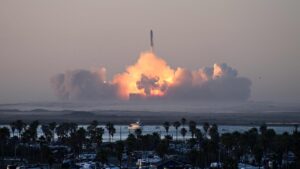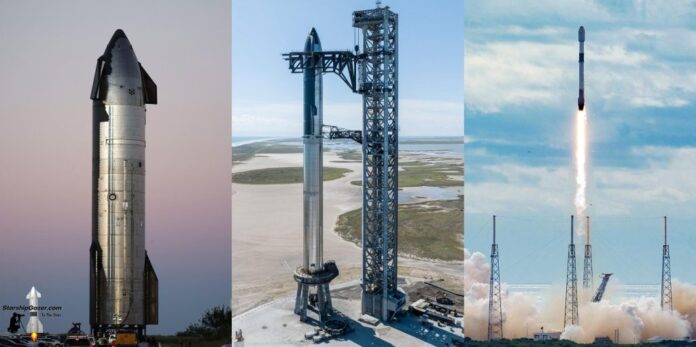Musk’s rocketship, the Starship Super Heavy, launches successfully on its second try. SpaceX, the business founded by billionaire Elon Musk, achieved a significant milestone on Saturday when it successfully launched its Starship Super Heavy rocket on its second experimental flight from Starbase in Texas. The mission is to construct the first entirely reusable space transportation system in history.
First contact with space was made by Starship, which also accomplished the main test goal of the hot-staging procedure. Separation of the Super Heavy launcher and Starship spaceship was also accomplished successfully.
The Super Heavy booster was destroyed by the spacecraft when the Starship ignited its engines. However, the Starship managed to go on. However, it was assumed to have failed when SpaceX lost touch with the spacecraft a short while later.
Elon Musk, the owner of SpaceX, complimented the launch team while sharing a video of the event on X. “Congratulations team @SpaceX team!,” he responded.
Over six months had passed since the Starship rocket’s disastrous maiden flight, which resulted in the vehicle’s total destruction, before this integrated flight test.
The goal of the Saturday flight test was to carry out hot staging, which is the process of separating the Super Heavy rockets and the Starship from one another. The Starship will continue on while the boosters are being built to land back like the Falcon-9 rocket.
Unlike the first test earlier this year, all 33 of the raptor engines powering the Super Heavy rocket fired precisely on schedule and performed flawlessly. The launch was flawless, as seen by the live stream.
A two-stage rocket to orbit, the Starship Super Heavy is intended to carry people and goods to Mars, the Moon, and Earth orbit. The spaceship will have the capacity to accommodate up to 100 passengers during extended interplanetary travel.
The vehicle’s Super Heavy booster, the first stage, is the biggest rocket ever constructed. It has 33 Raptor engines giving it more than 20 million pounds of thrust. The Starship, which is the spacecraft of the second stage, is intended to be completely reusable. It has six Raptor engines that provide it propulsion, and it can carry up to 100 tons of cargo.
In particular, this second test flight was very important for SpaceX’s space exploration ambition. SpaceX has significantly improved the rocket’s systems since the first test flight failed. These upgrades include a new system for attaching the Starship to its booster, an enhanced self-destruct mechanism, and a water deluge system to shield the launch pad from the extreme heat produced during liftoff.
A technical problem with one of the Superheavy’s grid-fin actuators caused the launch, which was originally planned for November 17, to be rescheduled until Saturday.
Before sending the Starship Super Heavy rocket into space to carry people, SpaceX intends to test the vehicle. The corporation intends to send a crew on its first journey to Mars in the 2030s and to the Moon after 2025.
































